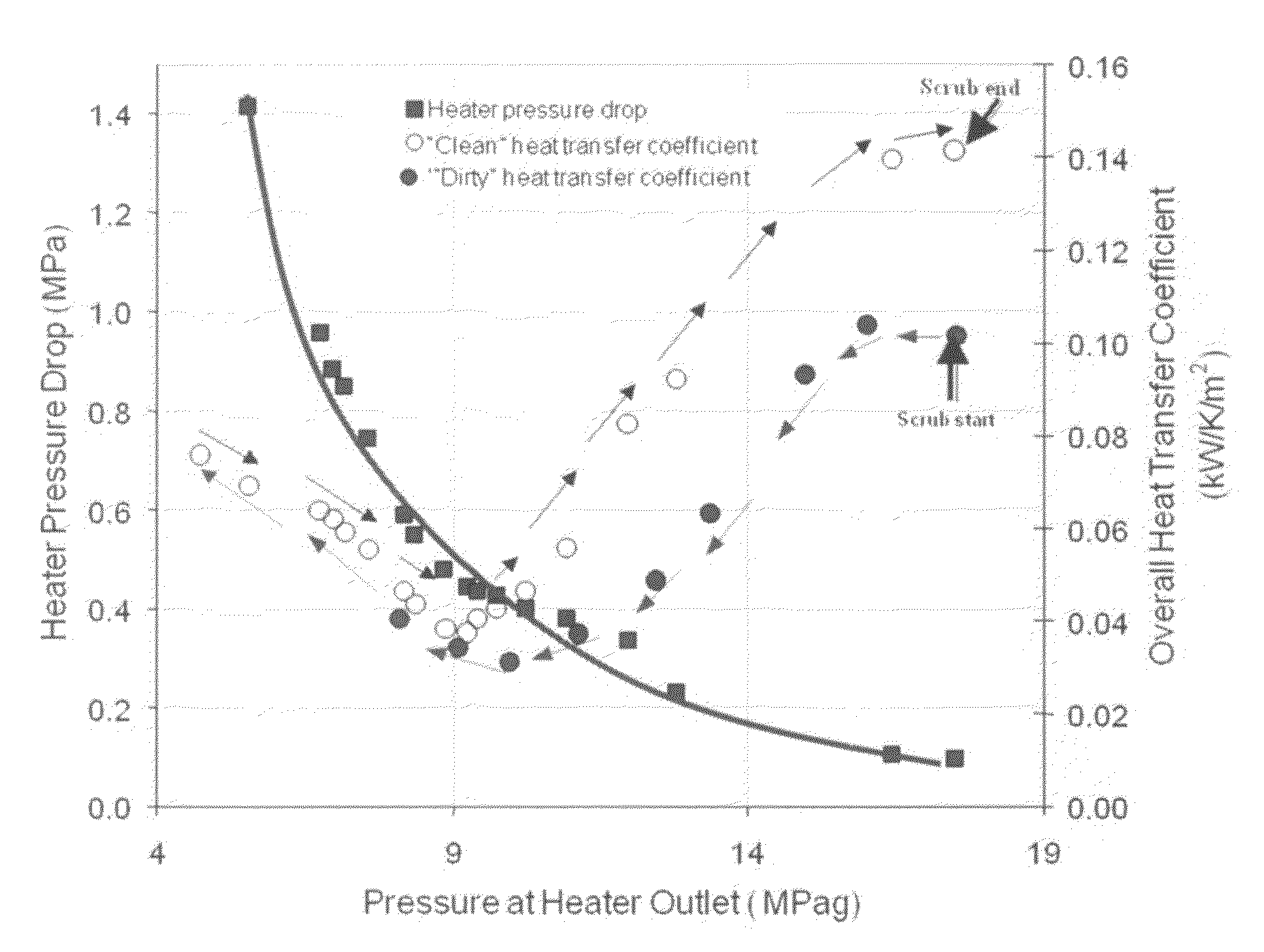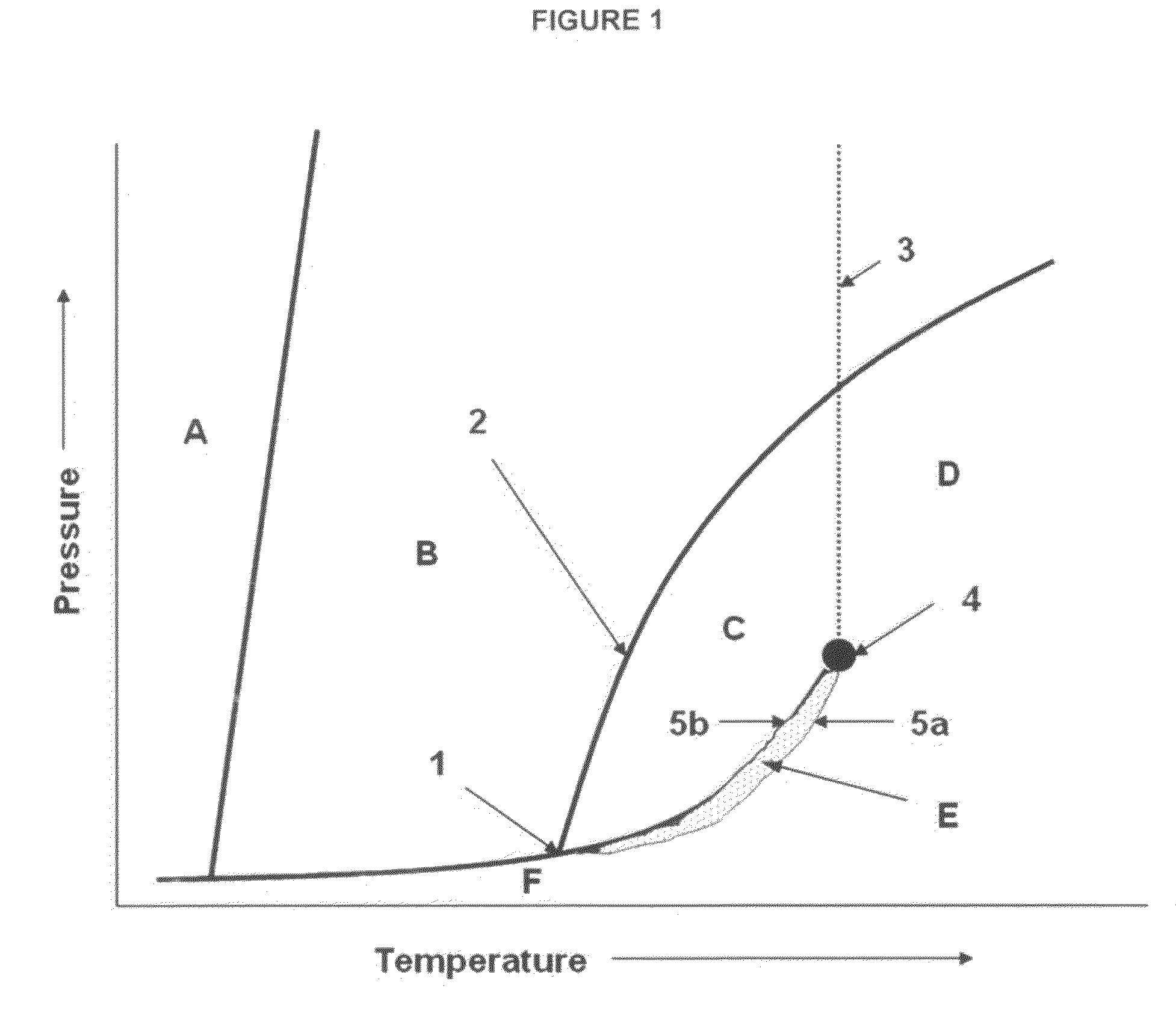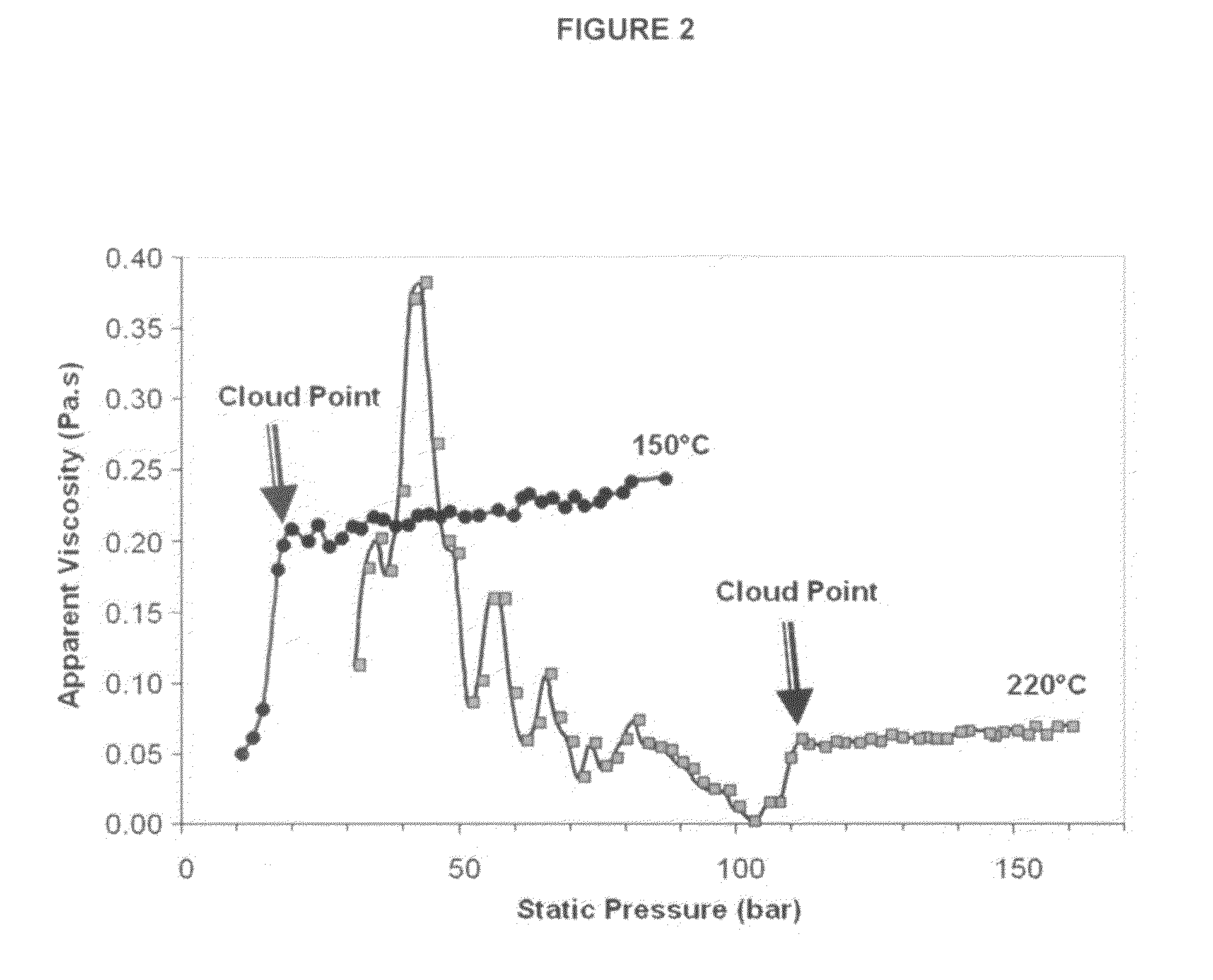High temperature process for solution polymerization
a polymerization process and high temperature technology, applied in the direction of separation processes, cleaning of hollow objects, lighting and heating apparatus, etc., to achieve the effect of reducing the stress force of fluid and reducing the amount of fouling
- Summary
- Abstract
- Description
- Claims
- Application Information
AI Technical Summary
Benefits of technology
Problems solved by technology
Method used
Image
Examples
examples
[0145]An example of the heat exchanger cleaning method of the current invention is illustrated in FIG. 5, which displays two plots. The data is for a single shell and tube heat exchanger, which is used to heat a representative effluent polymer solution containing approximately 15 wt % polymer in a hydrocarbon solvent containing a residual amount of ethylene. The flow rate of polymer solution through the heat exchanger was approximately 450 kg / h. The first plot, with ordinate values on the left hand side, shows changes in the pressure drop, (PIN−POUT)TRANSIENT across a heat exchanger due to deliberate changes in the pressure downstream of the heat exchanger, POUT which is plotted on the abscissa. The second plot displays the overall heat transfer coefficient, U, (which is a measure of the heat transfer efficiency of the heat exchanger) also plotted as a function of the heater downstream pressure, POUT. To clean the heat exchanger, POUT was deliberately decreased from about 17 MPag to...
PUM
| Property | Measurement | Unit |
|---|---|---|
| mass flow rate | aaaaa | aaaaa |
| temperature | aaaaa | aaaaa |
| temperature | aaaaa | aaaaa |
Abstract
Description
Claims
Application Information
 Login to View More
Login to View More - R&D
- Intellectual Property
- Life Sciences
- Materials
- Tech Scout
- Unparalleled Data Quality
- Higher Quality Content
- 60% Fewer Hallucinations
Browse by: Latest US Patents, China's latest patents, Technical Efficacy Thesaurus, Application Domain, Technology Topic, Popular Technical Reports.
© 2025 PatSnap. All rights reserved.Legal|Privacy policy|Modern Slavery Act Transparency Statement|Sitemap|About US| Contact US: help@patsnap.com



